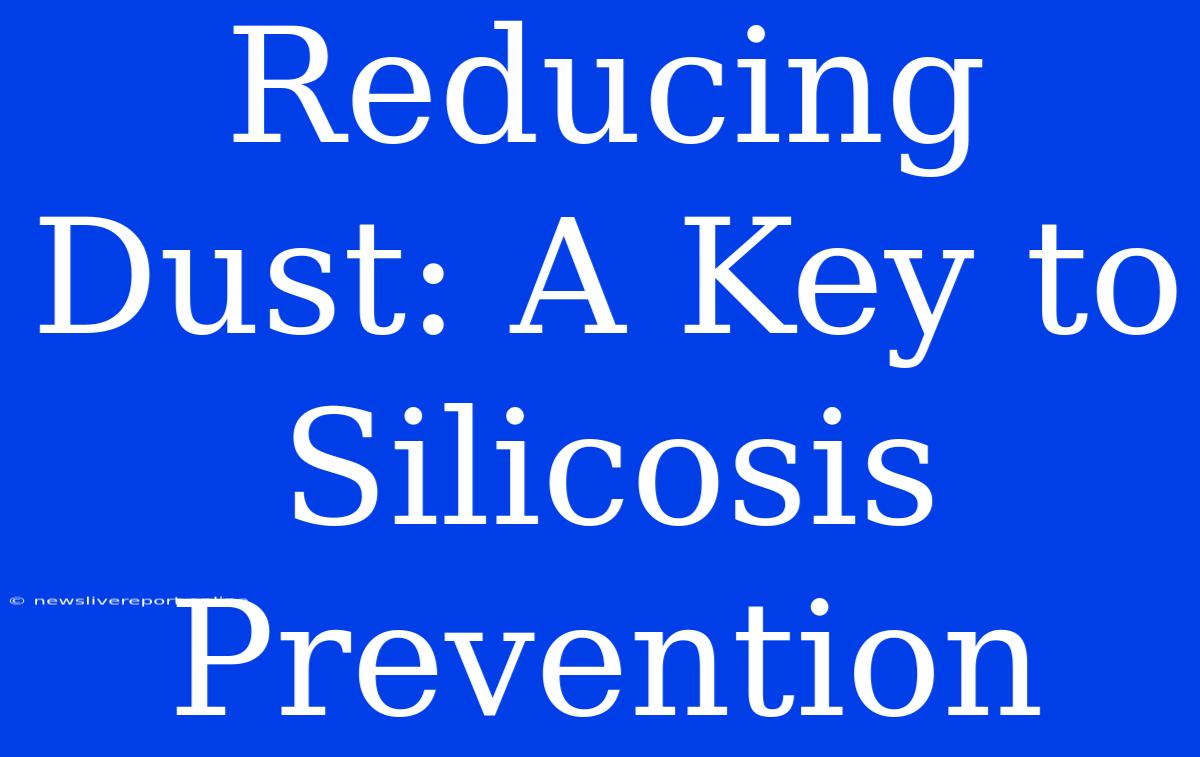Reducing Dust: A Key to Silicosis Prevention
Silicosis, a serious lung disease caused by inhaling silica dust, affects millions of workers worldwide. This preventable illness can lead to chronic respiratory problems, lung cancer, and even death. The good news? Effective dust control measures can significantly reduce the risk of silicosis.
What is Silicosis?
Silicosis is a type of pneumoconiosis, a group of lung diseases caused by breathing in certain types of dust. Silica dust, a common component of rock, sand, and soil, is particularly dangerous. When inhaled, silica dust particles lodge in the lungs, causing inflammation, scarring, and ultimately, impaired lung function.
Why is Dust Control So Important?
The key to preventing silicosis lies in minimizing silica dust exposure. This is achieved through effective dust control measures. Here's why dust control is paramount:
- Reduces Exposure: By controlling dust at the source, you significantly limit the amount of silica dust workers breathe in.
- Prevents Disease Progression: Early detection and dust control measures can prevent the progression of silicosis, preserving lung function and overall health.
- Safe Work Environment: Dust control creates a healthier and safer working environment for all employees.
Effective Dust Control Strategies:
1. Engineering Controls:
- Enclosure: Enclosing dusty processes prevents dust from escaping into the air.
- Ventilation: Proper ventilation systems draw dust away from workers, preventing inhalation.
- Wet Methods: Using water to dampen materials during processes can significantly reduce dust generation.
- Substitution: Replacing silica-containing materials with safer alternatives whenever possible.
2. Administrative Controls:
- Work Practices: Implementing safe work practices like using appropriate tools and equipment, cleaning up spills immediately, and wearing personal protective equipment (PPE) can minimize dust exposure.
- Worker Training: Providing thorough training on silica dust hazards and appropriate safety practices is crucial.
- Regular Monitoring: Monitoring dust levels in the workplace ensures effective control measures are in place and identifies potential issues early on.
3. Personal Protective Equipment (PPE):
- Respirators: NIOSH-approved respirators are essential for workers who cannot avoid exposure to silica dust.
- Protective Clothing: Dust-resistant clothing, gloves, and eye protection prevent dust contact with skin and eyes.
Conclusion:
Dust control is not just a suggestion; it's a critical aspect of workplace safety and health. By implementing effective engineering, administrative, and personal protective measures, we can significantly reduce the risk of silicosis and protect workers from this potentially debilitating disease. Remember, a safe work environment is a shared responsibility. By prioritizing dust control, we safeguard the health and well-being of workers and ensure a future free from the burden of silicosis.

